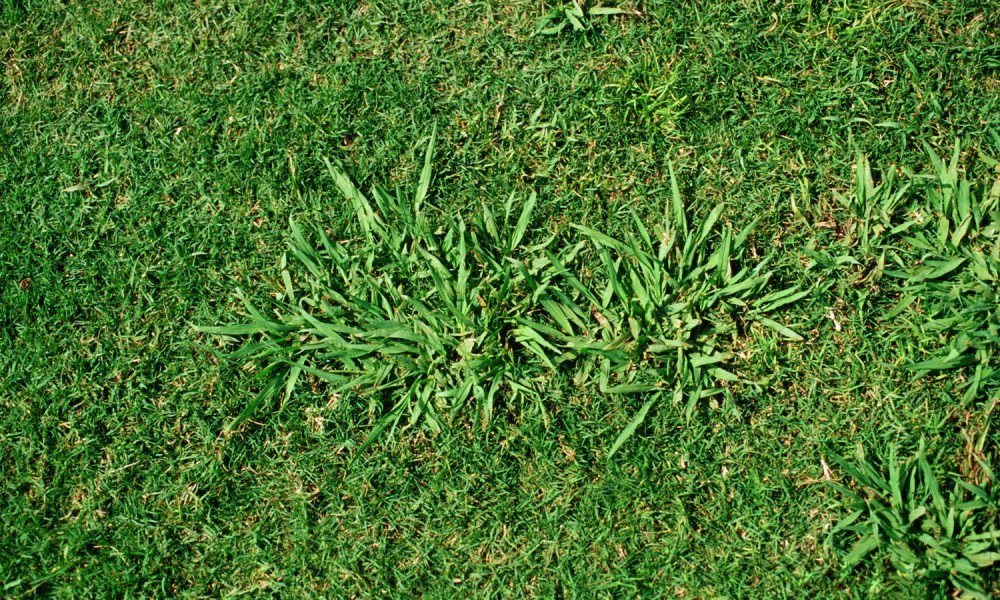
“Dallisgrass is a fast growing perennial used primarily for pasture. Yields of dallisgrass are similar to Argentine or common bahiagrass. It has smooth leaves, a deep root system and grows in clumps of few to many stems. Numerous leaves occur at the base of the plant, but few leaves are found on the stems. The slender stems tend to droop when seedheads develop.
Dallisgrass is adapted to low, moist areas and also produces well on fertile uplands. Though dallisgrass is not recommended for new plantings, it is a common species in pastures and can be managed for forage production. A legume, such as one of the recommended white clovers, can be grown with this grass to improve forage production and quality,” according to the University of Georgia UGA.
Why is it called Dallisgrass?
“Dallisgrass is native to South America and was introduced into the U.S. for its value as a forage plant. Records indicate that it was first introduced into the U.S. in the vicinity of New Orleans, Louisiana. It was found in Texas as early as 1875. The grass was named for A.T. Dallis of LaGrange, Georgia, who was an enthusiastic proponent of the plant around 1900,” states Texas Cooperative Extension.
Details
- Dallisgrass is perennial. It returns every spring from its clumping root system as warm weather returns.
- Dallisgrass seeds germinate in the spring and summer when soil temperatures are in the 60- to 65-degree range which results in clumpy patches of grass. These patches are coarser in texture and can present a tripping hazard where children regularly play.
- Every seed of dallisgrass is fertile. This grass does not require pollination to be viable which means that you must mow your lawn frequently to keep them from dropping to the ground.
- If you have a big crop of dallisgrass in your lawn, it is recommended to use a pre-emergent applied during the summer which will lessen the germination rate of the seeds.
- Spot treat dallisgrass clumps by using a glyphosate-only herbicide spray (no other active ingredients). This method will kill all grasses so be very careful where you spot treat.
Crabgrass vs Dallisgrass
It is very easy to confuse crabgrass and Dallisgrass since they are both full grown and thriving. It is important to know the difference because you deal with each of them in very different ways.
Crabgrass can be prevented by using a pre-emergent since it’s an annual plant that sprouts from seeds. Dallisgrass cannot be prevented, and you have to deal with the individual plants as they sprout up in your lawn.
Dallisgrass is taller and upright weed. Crabgrass is a broader leaf and grows lower to the ground and often looks similar to St. Augustine.
The seed head is the best way to identify the difference between these two weeds. Crabgrass seed heads are very fine and small and they grow out of the top of the stem. Dallisgrass seed heads are larger and have small black spots on them. They grow off the side of the stem.
Livestock concern
“Another management concern is dallisgrass’s susceptibility to an ergot infection of the seedheads. Livestock that consume dallisgrass infected with ergot can develop dallisgrass staggers (dallisgrass poisoning). Dallisgrass staggers is common in pastures that contain large amounts of dallisgrass.
Animals afflicted by dallisgrass staggers have uncontrolled twitching, make sudden movements, are easily spooked, and will often run when startled. In many cases, the animals will become so spooked that they will attempt to run through or jump fences or panels and may hurt themselves or persons that happen to be in the wrong place at the wrong time. Death from dallisgrass staggers is rare but it can cause death indirectly (e.g., drowning in a pond, falling off of a steep slope, etc.). In the most severe cases, however, the animals will go down, convulse, and even die. The only treatment is to remove the animals from the affected areas and provide them with an alternative forage/feed source. Usually, if the toxins are removed from the diet and the animals are safely confined, recovery from the poisoning can be complete,” reports University of Georgia UGA.
Do you have Dallisgrass in your lawn? We would love to earn your business! Please let our team of professionals help you. Don’t spend your valuable time dealing with things that we can handle for you. If you’re in any of the surrounding areas, give Proactive Pest Control a call at 770-800-PEST or 770-800-7378.
Contact Us
Choose Proactive Pest Control for professional, comprehensive, guaranteed pest and lawn management. The pros at Proactive will work diligently to gain your trust, confidence, and your total satisfaction. CALL US TODAY at 770-800-PEST to schedule a free, no obligation inspection and evaluation for your home or business. Or, contact us for a FREE consultation. Let us show you why Proactive Pest Control is northeast Georgia’s first choice for pest, termite, and lawn services.